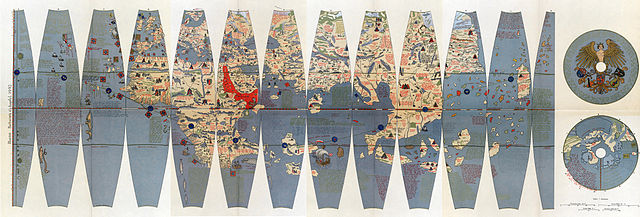A globe is a spherical model of Earth, of some other celestial body, or of the celestial sphere. Globes serve purposes similar to maps, but, unlike maps, they do not distort the surface that they portray except to scale it down. A model globe of Earth is called a terrestrial globe. A model globe of the celestial sphere is called a celestial globe.
Topography globe featuring physical features of the Earth
Trainer using a celestial sphere to show student a point used to see the apparent path the sun takes through the stars.
The "Erdapfel" of Martin Beheim is the oldest surviving terrestrial globe, made between 1491 and 1493.
Eartha, the largest rotating globe
The Erdapfel is a terrestrial globe 51 cm (20 in) in diameter, produced by Martin Behaim from 1490 to 1492. The Erdapfel is the oldest surviving terrestrial globe. It is constructed of a laminated linen ball in two halves, reinforced with wood and overlaid with a map painted on gores by Georg Glockendon. The map was drawn on paper, which was pasted on a layer of parchment around the globe.
Behaim-Globe, Germanisches Nationalmuseum, Nuremberg, height 133 cm (52 in)
Behaim’s Erdapfel
Modern recreation of the gores of the Erdapfel






